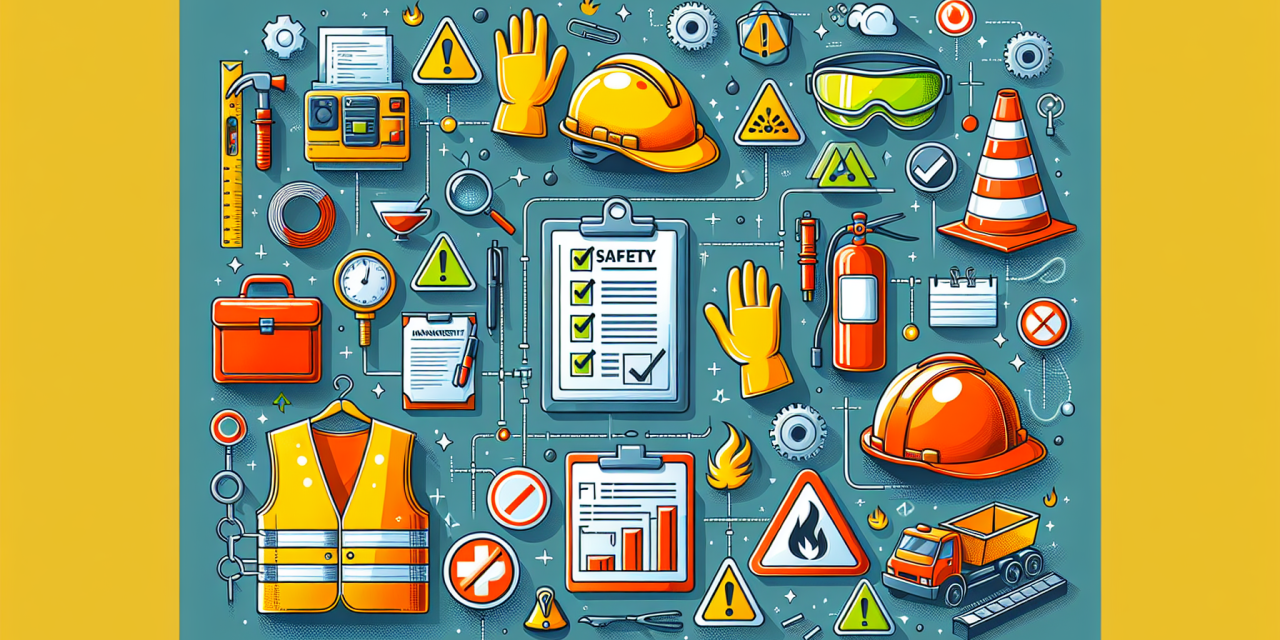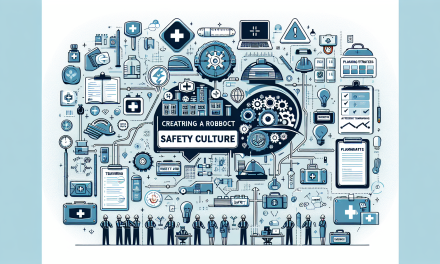Table of Contents
- Introduction
- Importance of Safety Management
- Best Practices for Safety Management
- Key Strategies in Safety Management
- Advanced Strategies for Risk Assessment
- Managing Health and Safety in the Workplace
- Modern Security Management Challenges
- FAQs
- Conclusion
Introduction
Creating a safe working environment remains a top priority for all organizations. Safety Management incorporates various practices, strategies, and processes designed to ensure employee wellbeing while fulfilling operational goals. Thus, it is crucial to adopt effective strategies tailored to your workplace’s specific needs.
Importance of Safety Management
Safety management effectively prevents workplace accidents and injuries, leading to a more secure environment. Furthermore, it helps enhance overall productivity and morale. When employees feel safe, they tend to be more engaged and invested in their work. Moreover, maintaining a strong commitment to safety can boost an organization’s reputation.
Financial Benefits
Implementing robust safety protocols often leads to significant cost savings. Fewer accidents can reduce medical expenses, insurance premiums, and potential legal claims. Consequently, companies that invest in safety management can allocate resources toward growth and development rather than repairs and settlements.
Compliance
Another key aspect involves meeting legal obligations. In many jurisdictions, safety regulations exist to protect workers. Adhering to these laws not only minimizes the risk of legal repercussions but also demonstrates a commitment to employee welfare.
Best Practices for Safety Management
Successful safety management relies on implementing best practices that encourage a culture of safety within the organization. Below are some pivotal practices to consider:
Active Leadership Engagement
Establishing a safety-oriented company culture starts at the top. Leadership commitment to safety sets the tone for the rest of the organization. Engaged leaders create policies that prioritize safety and lead by example. They encourage open and honest communication about safety concerns, helping employees feel comfortable reporting issues.
Regular Training and Education
Organizing ongoing training ensures that employees remain knowledgeable about safety protocols and procedures. Consequently, they can respond effectively in emergencies. This training should cover not only routine safety practices but also specialized training for specific risks associated with various roles.
Risk Assessment and Management
Understanding and assessing workplace hazards serve as a cornerstone for safety management. Regular risk assessments allow companies to identify potential dangers and implement appropriate mitigation measures. Additionally, organizations should develop a plan for addressing identified risks, ensuring employees are well-informed and prepared.
Utilizing Advanced Tools
Investing in modern tools and technology can enhance safety management efforts. Platforms that offer data-driven insights into workplace safety can significantly improve risk assessments and management strategies. For more in-depth knowledge, explore the Best Practices in Safety Management Training Course.
Key Strategies in Safety Management
Many strategies exist to bolster safety management initiatives. Adopting these strategies can lead to significant improvements in workplace safety.
Cultivating a Safety Culture
Fostering a culture centered around safety empowers employees to take ownership of their actions. Encouraging participation in safety discussions and offering incentives for safe practices contributes to this positive culture. When employees feel responsible for their safety, they are more likely to adhere to established protocols.
Clear Communication of Policies
Ensuring that safety policies are transparently communicated is crucial. Employees should fully understand expectations and the consequences of not meeting them. Regularly reviewing and updating these policies keeps safety at the forefront of the organization’s agenda.
Emergency Preparedness
Actively preparing for emergencies is essential in safety management. This includes developing clear and concise emergency response plans as well as conducting regular drills to ensure everyone knows what to do in case of an incident. Practicing these procedures helps reinforce the importance of being prepared.
Advanced Strategies for Risk Assessment
In addition to fundamental strategies, organizations should utilize advanced methodologies for managing complex workplace risks. Understanding these advanced techniques can substantially enhance an organization’s safety efficacy.
Mastering Advanced Process Risk Assessment and Management Strategies
Diving into advanced process risk management enables organizations to tackle sophisticated risks that may not surface in initial assessments. For comprehensive guidance on facing these challenges, consider reading this insightful article on Mastering Advanced Process Risk Assessment and Management Strategies.
Managing Health and Safety in the Workplace
Alongside physical safety measures, health management plays an increasingly significant role in workplace safety. Health risks can be just as detrimental as physical hazards, warranting a holistic approach to employee wellbeing.
Promoting Mental Health
Why does mental health matter in safety management? Poor mental health can lead to decreased productivity, higher accident rates, and reduced overall employee satisfaction. Therefore, it’s vital to incorporate mental health initiatives within safety programs. Resources for coping with stress, anxiety, and other mental health challenges should be easily accessible to employees. For a deeper understanding of this topic, refer to this helpful resource: A Comprehensive Guide to Effectively Managing Health and Safety in the Workplace.
Modern Security Management Challenges
As workplaces evolve, new security challenges arise. Organizations need to stay ahead of modern threats while ensuring employee safety. Implementing effective security management strategies is essential in navigating these evolving risks.
Addressing Security Threats
Understanding potential security threats is crucial for protecting employees, assets, and information. Conducting regular security assessments helps organizations identify vulnerabilities. By implementing appropriate security measures, organizations can deter potential threats and safeguard their environment. Learn more about this subject through the article Mastering Modern Security Management and Operations for Today’s Challenges.
FAQs
What are the key components of a safety management system?
A robust safety management system comprises several components, such as strong leadership commitment, risk assessment, employee training, clear communication of safety policies, and regular evaluation of safety performance.
How do organizations measure safety performance?
Organizations can measure safety performance using various metrics, including injury rates, near-miss incidents, employee feedback, and compliance with safety regulations. Regular audits and assessments help gauge effectiveness and identify areas needing improvement.
Conclusion
In summary, prioritizing safety management within an organization fosters a culture that values employee wellbeing while driving productivity. By implementing best practices, adopting advanced strategies, and considering employee health holistically, companies can significantly enhance their workplace safety. Ultimately, investing in safety management pays dividends both in organizational performance and employee satisfaction.





